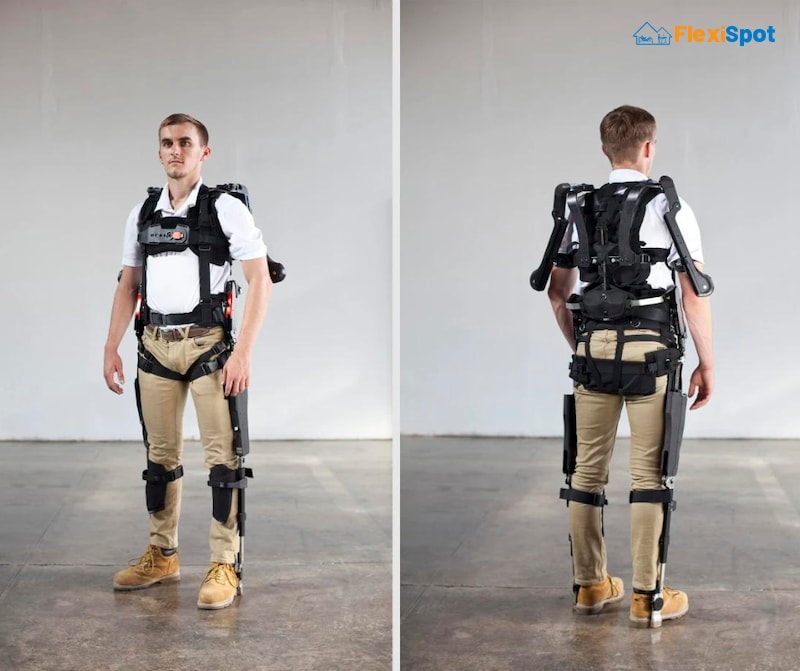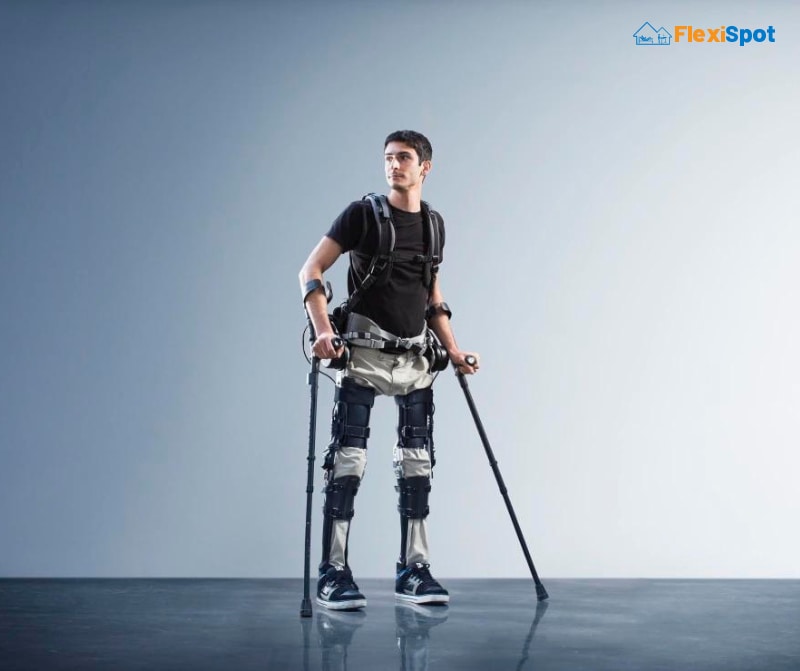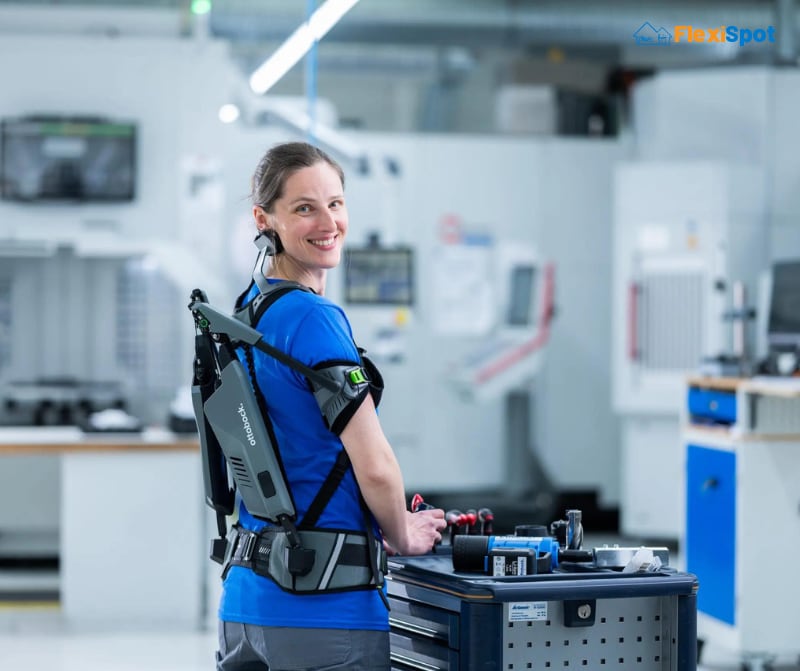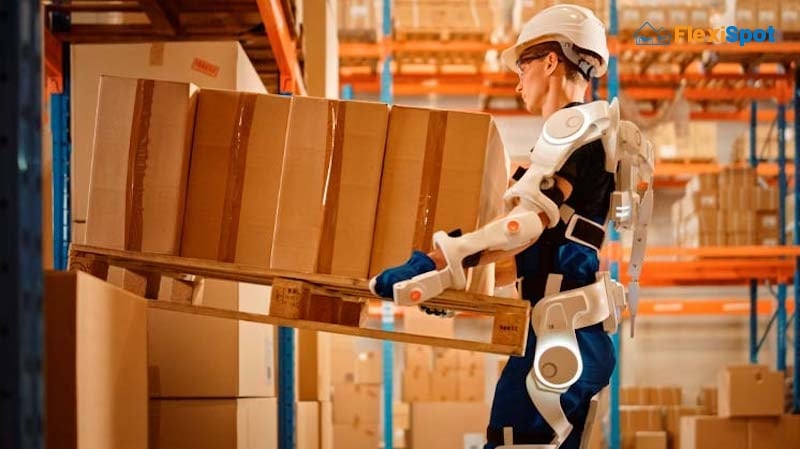Lately, exoskeletons and ergonomics have been receiving loads of attention. Exoskeletal devices have shown promising results as success stories of disability solutions, and rehabilitation have become popular. At first glance, exoskeletons seem to be the best solution to dealing with ergonomics issues in the workplace.
In fact, big corporations like Boeing, Ford, and Toyota have started to add exoskeletons to their operational workplace over the last couple of years. Today, many smaller companies are adopting the use of exoskeletons in different companies, from agriculture to manufacturing, since research has shown this device to be affordable, approachable, and practical.
The concept behind exoskeletons is simple- to address and deal with painful issues before they become issues that need to be addressed medically.
Photo Credit: NBC News
What are Exoskeletons?
Exoskeletons are wearables that adopt a structure similar to that of a suit. The aim of an exoskeleton is that it adjusts the way an individual puts force against other structures or the way an individual experiences forces that are externally applied. An exoskeleton can be seen as a way of:
Increasing an individual's strength by allowing him to exert more force than usual so that he becomes stronger or lowering the amount of strength an individual has to apply to perform any random task.
The leading cause of pain, lack of productivity, physical disability, missed work, medical bills, and turnover is overexertion. The Centers for Disease Control and Prevention states that the most common work-related health problem is back pain. In fact, it is estimated that employers end up paying approximately $1 billion for direct compensation workers. Hence, exoskeletons are becoming more popular to ensure worker safety and productivity.
Why are Exoskeletons Needed in the Workplace?
Evidence shows that one of the most common workplace health issues is musculoskeletal disorders. These disorders cause loads of discomfort and pain in the muscles of the human body. For instance, back pain is commonly felt with discomfort around the spine and other muscles, while upper limb disorders affect the shoulders, hands, wrists, and forearms.
The most common kind of pain experienced in the workplace is back pain. It causes limitation of the body, missed workdays, and loss of productivity in an industrialized world where missing even a day of work is a loss of millions. Studies show that lower-back pain accounts for 26 to 50% of the number of cases reported for occupational hazards.
The exoskeleton is an excellent introduction to the workplace as it lowers the risk factors of musculoskeletal disorders. These back support devices reduce the risk of spinal disc injury. They do this by absorbing some of the force the back muscles generate when an employee lifts a load.
The impact of exoskeletons is assessed by a technique called electromyography. This technique studies the activity of muscle groups in the body. It was reported that the use of exoskeletons in the workplace has allowed a decrease of 10 to 40%of lower back pain. In fact, these exoskeletons have also lowered pain in other parts of the body.
Even though the performance of exoskeletons varies across different studies, one thing is for certain- there is definitely a strong link between exoskeletons and ergonomics.
Photo Credit: NBC News
Types of Exoskeletons You Need to Be Aware Of
There are two types of exoskeletons that you need to be aware of:
Active or powered exoskeletons are structures that use battery power to increase the strength of a worker.
Passive exoskeletons are designed to lower the load that the worker experiences of a specific body part, such as the shoulder. These exoskeletons are made with soft as well as rigid materials so that they can move in collaboration with the worker.
Both these exoskeletons are meant to make work easier for the worker and reduce the chance of injuries.
What You Need to Know About Exoskeletons and Ergonomics
In practice, many renowned companies all over the world have started to view exoskeletons as a form of PPE- Personal Protective Equipment. According to safety experts and professional ergonomists, exoskeletons have been recognized as a form of hazard intervention in the workplace.
As an ergonomic solution, here are things you need to be aware of:
Photo Credit: Ottobock
Exoskeleton Function, Wearability, and Fit
When understanding the ergonomics of exoskeletons, there are two kinds of “fits” you need to be aware of:
Is the wearable exoskeleton the correct decision?
Is it a comfortable fit for the individual wearing it?
The key is to figure out whether the PPE helps solve a particular ergonomics problem. You must understand whether the exoskeleton has been fitted properly to ensure comfort and effectiveness for each worker while they are performing a certain task.
Exoskeletons are not meant to be worn every single day unless the individual is performing a particular task regularly. The exoskeletons today are not cross-tank devices, which means that you cannot wear the same thing when picking up boxes, for instance, as you would when lightening the burden from overhead work.
The success or failure of exoskeletons and ergonomics depends on whether it has been designed for a specific person and task. When it comes to the fit of the exoskeleton, it is important to understand that a device that is poorly fitted can increase the risk of serious injuries.
If the exoskeleton does not transmit or deflect some kind of force into the ground, the redistributed force can be applied to the body. For instance, if a device is meant to lower the arm power an individual needs to continue working overhead, the forces could be distributed to the body through the straps as well.
Hence, one must stay careful to ensure that the forces that are redistributed to the body and joints do not lead to safety problems and new ergonomics.
Exoskeleton Training, Hygiene, Maintenance, and Storage
Usually, exoskeletons cannot be shared because they must fit a particular body type to function efficiently. Since exoskeletons are meant to be worn, the factor of hygiene also plays an important role.
Hence, if workplaces choose to use exoskeletons as PPEs, every single worker should have their own device, and some steps should be followed to ensure that the exoskeleton is kept clean in the long run.
Photo Credit: Iberdrola
Exoskeleton Acceptance in the Workplace
Before you introduce exoskeletons in the workplace, it is important to understand that there are many types of exoskeletons. Most of these help support particular functions or body types. For instance, you will find exoskeletons that assist shoulder strength. Toyota is known for using these exoskeletons for workers who are involved in overhead work so that they do not face back pain or shoulder pain.
Before you introduce exoskeletons in the workplace, take note of the movements of your workers. Moreover, keep track of common injuries and what makes your workers feel physically sore.
Before exoskeletons can be accepted in the workplace, you must also look at the culture within. The success of this depends on how accepting managers and workers are of change. This emerging tech needs to be accepted by the majority. Hence, you must educate your workplace and communicate with them to see the pros of exoskeletons.
What To Think of Before Implementing Exoskeletons in the Workplace
Has an assessment been performed to recognize and measure a particular hazard, for example, overhead work, and then matched with an exoskeleton that can help deal with it?
Can the root cause of this problem be controlled by an engineering solution?
What are the resources that will be needed to train, clean, store, maintain, purchase, and fit exoskeleton devices in the workplace?
Do you accept the time it will take to store, locate, and put on the exoskeleton before and after the particular task has been performed?
Think about the comfort, hygiene, breathability, and surrounding temperature- is it really suitable for environmental use?
Will your workers agree to wear the device every day? What happens if some workers do not accept or are not able to agree to the protocols of using the exoskeletons?
Is the exoskeleton suitable for the particular task at hand? Has it been sufficiently tested in the working environment?
Conclusion
So, is there a connection between exoskeletons and ergonomics in the workplace? Absolutely. However, the answer depends on what the exoskeleton is being used to solve and whether it will be implemented and maintained correctly.
Since exoskeletons have only been around for a while, the jury is still out on whether they can reduce injuries in the long run. Current evidence has proved that they do not cause harm to the muscles. Workers wearing exoskeletons have reported finding it easier to lift 25-pound boxes at work. Of course, the job also plays a vital role in determining whether exoskeletons will be successful.
However, if you do decide to implement exoskeletons in the workplace, you should check if it will reduce the chances of a particular hazard, how you can implement it in the day-to-day workplace environment, and whether workers will be able to maintain and store it properly.



